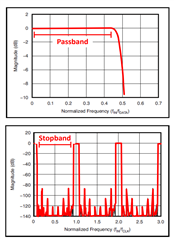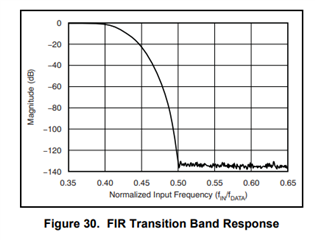Other Parts Discussed in Thread: ADS127L11
Hi to forum users!
I have a doubt about dynamic range of delta-sigma converters.
Dynamic range is based on RMS noise, higher decimation factor I use, lower RMS noise, so I try to use highest available sampling rate (Fmod) and higher decimator factor.
On datasheets I always see simple input RC lowpass filter (usually 1th order) due to high modulator frequency, this gives me low component count, low cost, low PCB space.
Regardless cost and PCB space, could I get some improvement using higher order (let's say 8th order) lowpass filter as analog anti-alias before ADC, or would it be totally worthless?
Thanks.



